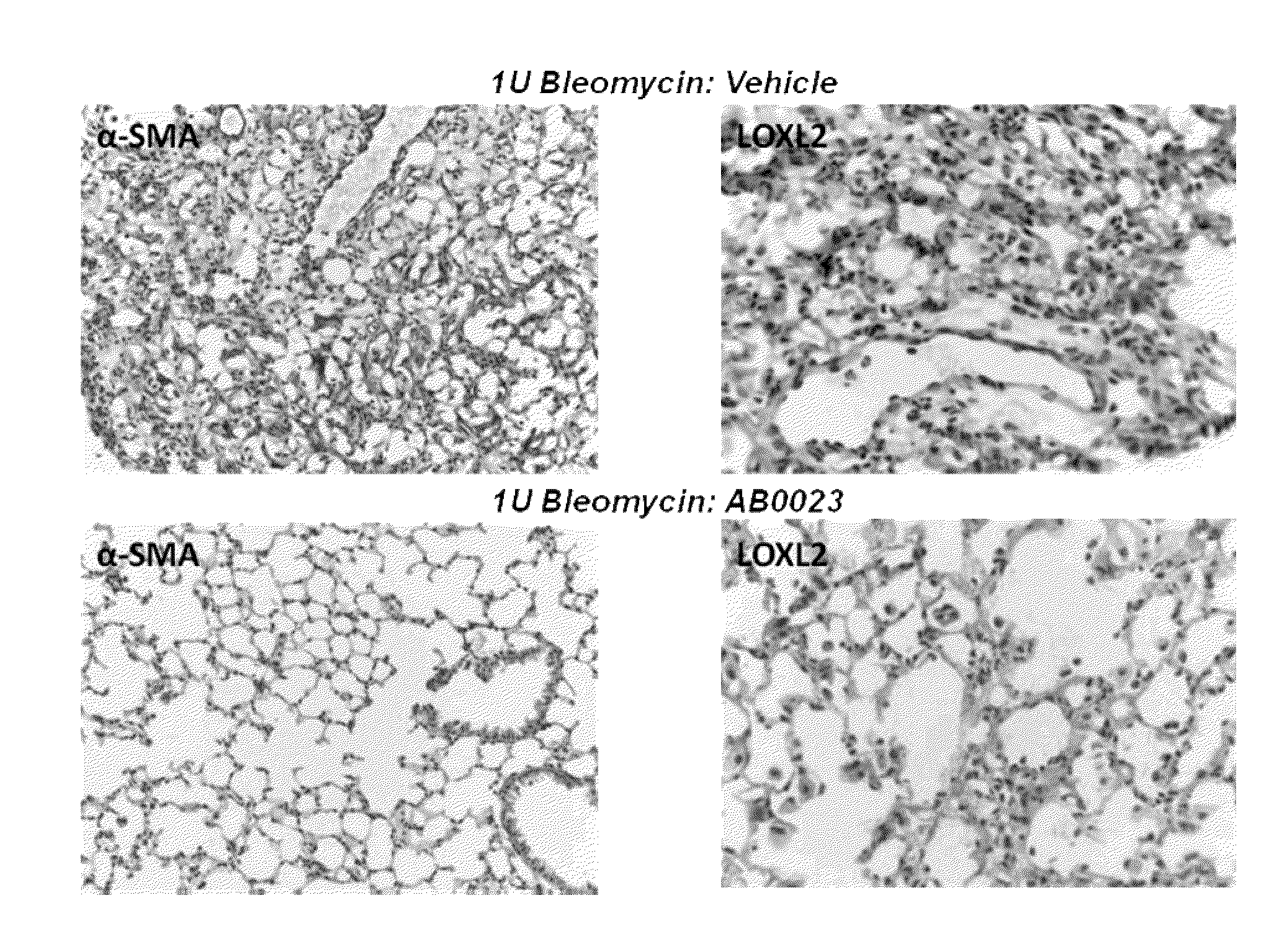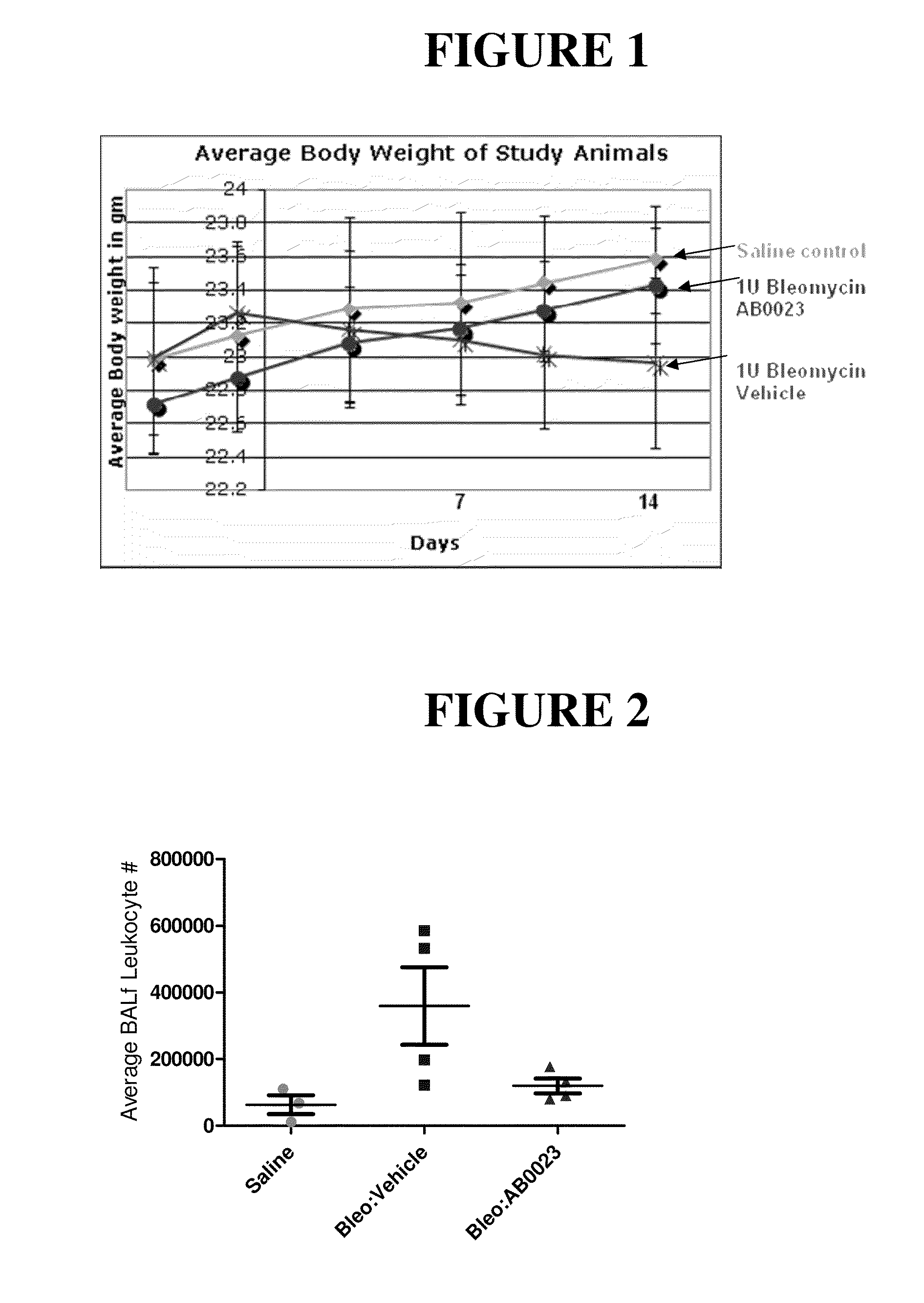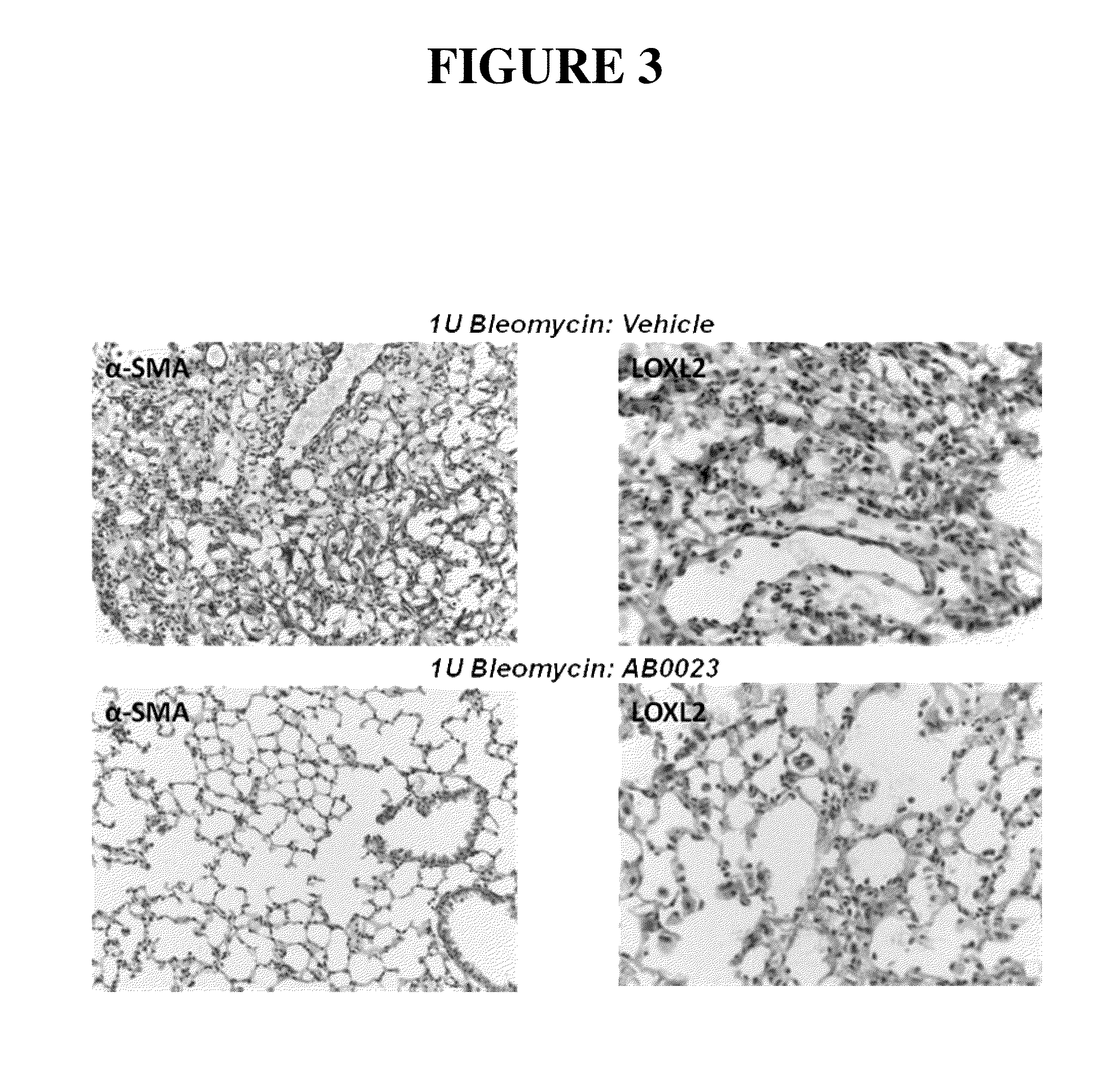Methods and compositions for treatment of pulmonary fibrotic disorders
a pulmonary fibrotic disorder and composition technology, applied in the field of pulmonary fibrotic disorders, can solve the problems of pulmonary hypertension, ineffective therapy, capacity for oxygen transfer, etc., and achieve the effects of reducing body weight, fibrosis, and increasing lung weigh
- Summary
- Abstract
- Description
- Claims
- Application Information
AI Technical Summary
Benefits of technology
Problems solved by technology
Method used
Image
Examples
example 1
[0258]Bleomycin-induced pulmonary fibrosis in mice is a recognized, standard model system for IPF and other pulmonary fibrotic disorders. See, for example, Harrison and Lazo (1987) J. Pharmacol. Exp. Ther. 243:1185-1194; Walters and Kleeberger (2008) Current Protocols Pharmacol. 40:5.46.1-5.46.17. This system was used to study the effects of a LOXL2 inhibitor, in the form of an anti-LOXL2 antibody, on the course and outcome of lung fibrosis.
[0259]In brief, lung fibrosis was induced in male C57B / L6 mice by oropharyngeal administration of bleomycin. For bleomycin administration, animals were anaesthetized and suspended on their backs at an approximately 60° angle with a rubber band running under the upper incisors. The tongue was held with one arm of a set of padded forceps, thereby opening the airway. Bleomycin solution was introduced into the back of the oral cavity by pipette, and the tongue and mouth were held open until the liquid was no longer visible in the mouth.
[0...
example 2
Prevention Study
[0261]In this study, 21 male C57BL / 6 mice, at 7-8 weeks of age, were divided into three groups: Group 1 contained 5 animals and Groups 2 and 3 contained 8 animals each. Group 1 was a control group in which animals were treated with saline on Day 0 and twice weekly thereafter. Animals in Group 2 received 1 Unit / kg bleomycin on day 0. Four days and one day prior to bleomycin administration, animals in Group 2 also received injections of antibody diluent (PBS), and they received injections of antibody diluent twice weekly after administration of bleomycin. Animals in Group 3 received 1 Unit / kg bleomycin on day 0. Four days and one day prior to bleomycin administration, animals in Group 3 were injected with 15 mg / kg anti-LOXL2 antibody (AB0023), and they received injections of 15 mg / kg antibody twice weekly after administration of bleomycin. The study design is shown in Table 1.
[0262]Bleomycin sulfate (MP Biomedicals, Catalogue #19030, Lot 2373K) was dissolved in 0.9% sa...
example 3
[0291]In this study, mice were administered bleomycin and allowed to develop pulmonary fibrosis, then treated with either an anti-LOXL2 antibody (AB0023) or a control antibody (AC-1).
[0292]Study Design
[0293]C57BL / 6 mice, 7-8 weeks of age, were divided into three groups. Group 1 (controls) consisted of five animals, while Groups 2 and 3 consisted of 8 animals each. On day 0, animals in Groups 2 and 3 were exposed to bleomycin as described in Example 2, except that the dose was 2.5 Units / kg. Control animals in Group 1 were administered an equal volume of saline, using the same methods. No further treatment was administered to the animals in Group 1, and they were sacrificed on Day 14. On day 7, animals in Group 2 received 15 mg / kg of AC-1 antibody (control) and animals in Group 3 received 15 mg / kg of the anti-LOXL2 antibody AB0023. Administration of antibody was by intraperitoneal (IP) injection. Administration of antibodies to animals in Groups 2 and 3 was continued tw...
PUM
| Property | Measurement | Unit |
|---|---|---|
| Dimensionless property | aaaaa | aaaaa |
Abstract
Description
Claims
Application Information
 Login to View More
Login to View More - R&D
- Intellectual Property
- Life Sciences
- Materials
- Tech Scout
- Unparalleled Data Quality
- Higher Quality Content
- 60% Fewer Hallucinations
Browse by: Latest US Patents, China's latest patents, Technical Efficacy Thesaurus, Application Domain, Technology Topic, Popular Technical Reports.
© 2025 PatSnap. All rights reserved.Legal|Privacy policy|Modern Slavery Act Transparency Statement|Sitemap|About US| Contact US: help@patsnap.com



